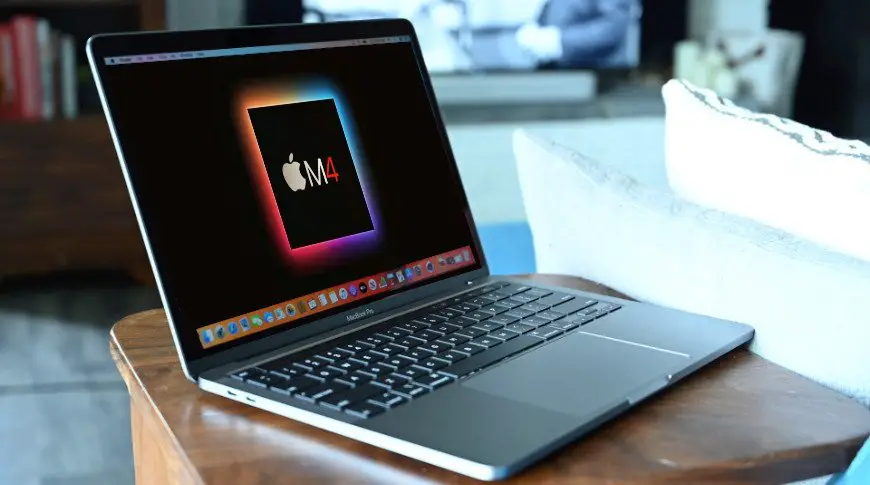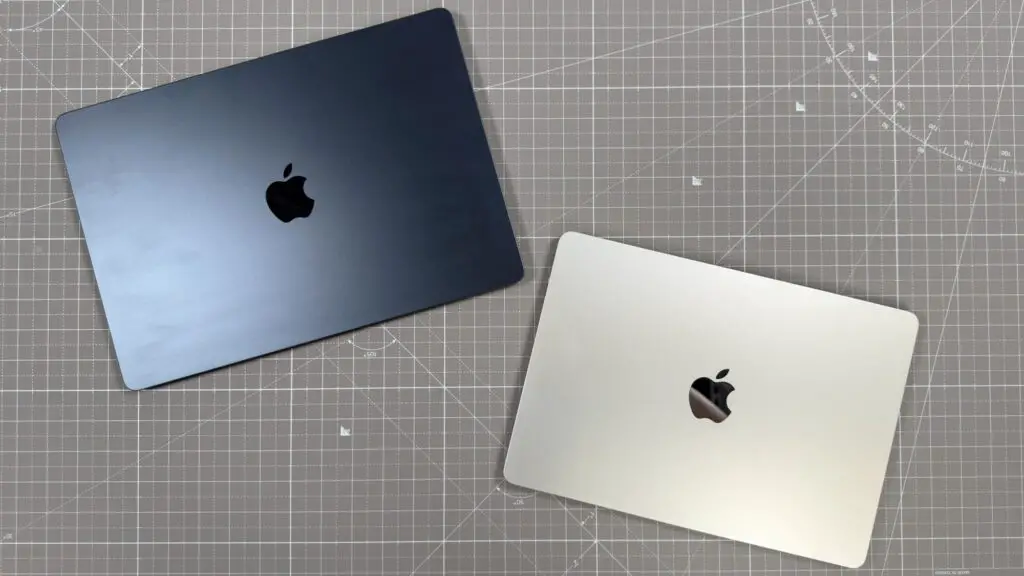The Evolution of Apple’s MacBook Pro: Anticipating the M4 Chip
In the ever-evolving world of technology, Apple continues to push the boundaries of innovation with its product lineup. The recent introduction of the M4 chip in the iPad Pro caught many off guard, sparking intense speculation about when this powerful new processor would make its way into Apple’s laptop range. As rumors swirl and anticipation builds, all eyes are on the flagship MacBook Pro, which is expected to be the first in line for this significant upgrade.
The MacBook Pro’s Journey
The MacBook Pro has long been Apple’s premium laptop offering, catering to professionals, creatives, and power users who demand top-tier performance. With each iteration, Apple has refined both the design and internal components, consistently raising the bar for what a high-performance laptop can achieve. The transition from Intel processors to Apple’s custom-designed M-series chips marked a pivotal moment in the MacBook Pro’s evolution, dramatically improving performance while enhancing energy efficiency.

The current MacBook Pro models, featuring M3 series chips, have already set new standards in the industry. However, the tech world never stands still, and with the unexpected debut of the M4 chip in the iPad Pro, speculation is rife about how this next-generation processor will transform the MacBook Pro experience.
Release Date Speculation
As with all upcoming Apple products, the release date for the M4-equipped MacBook Pro is shrouded in secrecy. However, industry insiders and respected leakers have been piecing together information to provide educated guesses about when we might see these new models hit the shelves.
The consensus among trusted sources points to a late 2024 release for at least some models of the M4 MacBook Pro. Ross Young, a well-known analyst in the display industry, has suggested that screen shipments for both 14-inch and 16-inch MacBook Pro models will commence in the third quarter of 2024. This timeline aligns with a potential launch in the final months of the year, possibly October or November.
This projection is further supported by Mark Gurman, a prominent Apple leaker associated with Bloomberg. Gurman’s sources also indicate that we can expect to see MacBook Pro models with M4 chips “later” in 2024. However, he introduces an interesting caveat to this timeline.

Staggered Release Strategy?
According to Gurman, Apple may adopt a staggered release strategy for the various MacBook Pro models. He suggests that the entry-level 14-inch MacBook Pro, featuring the base M4 chip, could be the only model to debut in 2024. The higher-tier 14-inch versions and all 16-inch variants, which are expected to sport the more powerful M4 Pro and M4 Max processors, might not see the light of day until early 2025.
This potential split release schedule is intriguing, as it deviates from Apple’s approach with the M3 series, where all variants (M3, M3 Pro, and M3 Max) were launched simultaneously. While a unified launch remains possible, the idea of a staggered release spanning late 2024 and early 2025 is gaining traction among industry watchers.
The rationale behind such a strategy could be multifaceted. It might allow Apple to better manage supply chain constraints, gauge market demand for the new chips, or simply spread out its product announcements to maintain a steady stream of news and excitement around its offerings.

Pricing Expectations
While rumors about release dates abound, concrete information about pricing for the M4 MacBook Pro models remains elusive. Given that the changes expected in this iteration are primarily internal – centered around the M4 chip upgrade – it’s reasonable to speculate that pricing may remain relatively stable compared to current models.
As a reference point, the current MacBook Pro lineup is priced as follows:
- 14-inch MacBook Pro: Starting at $1,599 / £1,699 / AU$2,699
- 16-inch MacBook Pro: Starting at $2,499 / £2,599 / AU$4,299
These price points have remained consistent with the previous generation, suggesting that Apple may continue this trend with the M4 models. However, if significant improvements in capabilities or manufacturing costs are associated with the M4 chip, we could see some adjustments to these figures.
It’s worth noting that Apple typically maintains its premium positioning in the market, so while we might not see dramatic price increases, significant price reductions are equally unlikely.
Design and Feature Expectations
For those hoping for a radical redesign of the MacBook Pro with the M4 update, current indications suggest that such expectations should be tempered. The prevailing wisdom among industry insiders is that Apple will largely stick to its current formula for these professional-grade laptops.

We can expect to see the continuation of the 14-inch and 16-inch form factors, with the overall design language remaining consistent with the current models. This isn’t necessarily a negative, as the current MacBook Pro design has been well-received for its balance of aesthetics and functionality.
However, this doesn’t mean there won’t be any changes or improvements. While the core design may remain stable, we can anticipate refinements and upgrades in various areas:
- M4 Chip Integration:
The headline feature of the new MacBook Pro will undoubtedly be the M4 chip. Based on what we’ve seen with the iPad Pro implementation, we can expect significant performance gains over the M3 series. The M4 is likely to offer improved processing power, enhanced graphics capabilities, and more efficient power management. - AI Acceleration:
One of the most exciting aspects of the M4 chip is its enhanced capabilities for AI acceleration. As we’ve seen with the iPad Pro, the M4 brings substantial improvements in this area. Given Apple’s recent focus on AI with the introduction of Apple Intelligence at WWDC 2024, we can expect the MacBook Pro to leverage these capabilities extensively.
The integration of advanced AI features could revolutionize how users interact with their MacBooks, potentially offering more intuitive interfaces, improved natural language processing, and enhanced creative tools. This push towards AI-centric computing is likely Apple’s response to Microsoft’s efforts with Copilot and AI-enhanced Surface devices.
- Connectivity Enhancements:
While the current MacBook Pro models already offer excellent connectivity options, there’s always room for improvement. Rumors suggest we might see an increase in the number of Thunderbolt ports or, more likely, an upgrade to higher-bandwidth ports. These enhanced connections could support even higher resolution external displays with faster refresh rates, catering to the needs of creative professionals and power users. - Display Technology:
While significant changes to the display aren’t expected in this iteration, Apple may introduce incremental improvements in brightness, color accuracy, or energy efficiency. The current Liquid Retina XDR displays are already top-of-the-line, so any changes are likely to be subtle refinements rather than dramatic overhauls. - Battery Life:
With each generation of Apple silicon, we’ve seen improvements in energy efficiency. The M4 chip is expected to continue this trend, potentially offering even better battery life than the already impressive M3 models. This could be particularly beneficial for professionals who rely on their MacBooks for long workdays away from power outlets. - Thermal Management:
As processors become more powerful, effective heat dissipation becomes increasingly crucial. Apple may introduce refinements to the MacBook Pro’s thermal management system to ensure optimal performance under heavy loads, especially with the potentially more powerful M4 chip.
Looking to the Future: Thinner MacBooks?
While the immediate future of the MacBook Pro seems to focus on internal upgrades rather than external changes, there are indications that more significant design shifts may be on the horizon. Mark Gurman has hinted at a broader trend within Apple towards creating thinner devices across its product lines.
This “thinpossible” philosophy, as demonstrated by the new OLED iPad Pro, could eventually make its way to the MacBook Pro lineup. However, Gurman suggests that this transition will occur gradually “over the next couple of years.” This timeline implies that while we might see some minor slimming in the 2024 models, a more dramatic reduction in thickness is more likely to appear in the 2025 or 2026 iterations of the MacBook Pro.
The potential move towards a significantly thinner design in future models could coincide with another major technological shift: the adoption of OLED displays. Current rumors suggest that OLED screens might not make their way to MacBook Pros until 2026 at the earliest. The introduction of OLED technology could facilitate a thinner overall design while also offering improvements in display quality, such as deeper blacks and more vibrant colors.
It’s important to note that these longer-term predictions are more speculative and subject to change as Apple’s plans evolve. The tech giant is known for its secrecy and ability to surprise, so while these rumors provide interesting food for thought, they should be taken with a grain of salt until official announcements are made.
What to Expect in 2024
As we look towards the potential launch of M4-equipped MacBook Pros later this year, it’s important to set realistic expectations. The relative quiet from the rumor mill regarding major design changes or new features suggests that the 2024 refresh will be more evolutionary than revolutionary.
The primary focus will be on the integration of the M4 chip and the performance enhancements it brings, particularly in the realm of AI capabilities. We may see some minor tweaks to the design, such as refined port layouts or subtle improvements to the keyboard or trackpad, but dramatic changes are unlikely.
This approach aligns with Apple’s typical product development cycle, where major redesigns are usually spaced out over several years, with intervening updates focusing on internal improvements and refinements.
Conclusion: A Powerful Update in a Familiar Package
The anticipated 2024 MacBook Pro with the M4 chip represents Apple’s commitment to continuous improvement and innovation. While it may not bring a complete overhaul of the laptop’s design, the integration of the M4 chip promises to deliver significant performance enhancements, particularly in AI-related tasks.
For professionals and power users who rely on the MacBook Pro for demanding workloads, the M4 update could provide compelling reasons to upgrade. The improved processing power, enhanced AI capabilities, and potential connectivity upgrades will likely make these new models even more capable tools for creative work, software development, scientific computing, and other intensive tasks.

As we await official announcements from Apple, it’s clear that the MacBook Pro continues to evolve as a cornerstone of the company’s computing lineup. Whether launching in late 2024 or early 2025, the M4-equipped models are poised to set new standards for performance in the laptop market.
While the external changes may be subtle, the internal improvements could be transformative, further cementing the MacBook Pro’s position as a leader in the high-performance laptop segment. As always, the true impact of these updates will only be fully understood once the devices are in the hands of users, pushing the boundaries of what’s possible with a portable computer.
